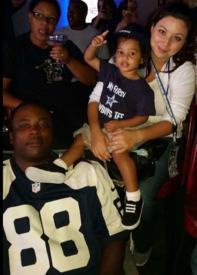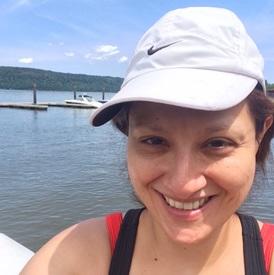A guide to get you started on your path to Sexypants.
Replies
-
Bump1
-
Putting on my sexypants one leg day at a time.
Great post.0 -
Concur.0
-
Lift 1lb weights a hundred times for toning, especially if you are a girl. You don't want to get big!Yes, but how do I tone?0 -
MFP 1010
-
Bumping for info0
-
Or are crotchless.
Either way! I'm in
Right this minute?
OP: This makes too much sense. Where should i send my money, and can I at least get some placebo treatment in order to make myself feel like I am doing something magical? I like magic! 0
0 -
Thank you OP! This is fantastic info!
 0
0 -
Thank you for taking the time to post valuable information in a a easy to read format with links as well.:flowerforyou:I generally think that people put emphasis on things that either don't matter at all, or only matter a small amount, while ignoring the things that matter a great deal.
Overview of what I think is important:
1) Eat the appropriate caloric (and macronutrient) intake for your goals and track intake accurately. I think eating mostly nutrient dense and whole foods while still allowing some "treats" is a reasonable starting point/guideline.
2) Exercise regularly. Do something you enjoy or at worst case choose the least objectionable activity. Ideally you should include some form of resistance based training as a part of your program.
3) Get adequate rest/sleep.
4) Establish metrics and use them appropriately.
5) Repeat.
And do NOT complicate things worrying about minutia.
The vast majority of you should be able to stick to the above and make very good progress. Will other things matter at some point? Possibly, but the above will get you very far.
I'm going into some details here and when I make generalizations please realize that I'm well aware of the idea of applying context and unfortunately it's difficult to generalize and apply context at the same time. So treat the generalizations as such.
1) Eat the appropriate caloric (and macronutrient) intake for your goals and track intake accurately.
http://www.myfitnesspal.com/topics/show/819055-setting-your-calorie-and-macro-targets
The above link is not going to be accurate for everyone. Please treat it as a starting point and general information.
If you choose to use MFP's default setting rather than a TDEE method, it's important to set realistic weight loss targets based on your current bodyweight. I think .5 to 1% bodyweight per week is a good general recommendation for most people. Very obese people may go a bit faster. Be aware of the exercise calorie model that MFP uses if you choose to use MFP's default method. Exercise expenditures are often over-stated so you may wish to eat back a set percentage of those calories, such as 50% for starters.
See here:
http://www.myfitnesspal.com/topics/show/818082-exercise-calories-again-wtf
An aside on food selection
I am a firm believer in moderation. However, if you're the type that can't have a serving of potato chips without eating two bags of potato chips then it stands to reason that you may not be able to practice moderation with potato chips. I concede that for some people, elimination of some things, even if temporary, could be a viable short term strategy while you learn to apply moderation. That being said, I think "most" people will do very well using a food selection strategy where somewhere around 80% of their diet consists of whole and nutrient dense foods with the other 20% consisting of whatever you prefer.
http://www.myfitnesspal.com/topics/show/817188-iifym
Yes, health is important and you should be looking to consume a lot of nutrient dense foods in your diet. But this doesn't mean you can't also have a pop tart or some ice cream. Going from fat to not fat is very likely to significantly improve your health.
Stop guessing .
TRACK ACCURATELY. Use a digital food scale even if it is just for a few weeks so you can get yourself well aligned with how many calories you are really consuming. Now there are arguments against this -- if being this meticulous is going to prevent you from adhering to your diet then I can understand not wanting to be attached to the food scale. However if you are not making progress at a pace expected by your assumed food intake, you really need to take some time to dial that intake in accurately and a food scale along with detailed and consistent logging is the best way to do this. I think at the very least, a couple of weeks spent meticulously weighing and measuring will teach you portion sizes. If you get very OCD or possibly have ED related issues that are magnified or brought out by meticulous tracking then I could see not wanting to use this method. But as a general recommendation I think it's a smart idea to implement.
Sara and I run a group called Eat, Train, Progress, where we frequently help people who are stalled on progress. The number one issue (by a very significant margin) is inaccurate tracking and not weighing portions properly. They are consuming more calories than they think. Followed closely by simply eating too many calories (tracking is fine but the goal intake is just too high). Very seldom do we see people who are truly not eating enough, although it has happened.
See here: http://www.myfitnesspal.com/topics/show/872212-you-re-probably-eating-more-than-you-think
Finally, once you have accurate data you should be using this data and your results to make adjustments up or down to that intake to produce the desired results. I would suggest that what actually happens with your body is going to be far more valuable than what any online calculator tells you.
Your goal with setting your intake is to sort of hone-in on what is going to give you results at a reasonable intake level. It is most definitely not a "use this calculator and permanently set my intake to this level for several months regardless of what my weight does or how I feel".
2) Exercise. Do something you enjoy or at worst case do the least objectionable activity. Ideally some form of resistance based training.
Dieting without any resistance training will increase the likelihood that you will lose muscle as you lose weight. Generally it would be a good idea to avoid this both for metabolic reasons and for aesthetic reasons and possibly for functional reasons. Resistance training may also improve insulin sensitivity, it may have a positive effect on bone density, and general overall sexiness.
Now having said that, if you're a 60 year old 300 lb woman, you don't necessarily need to hire an olympic lifting coach and start barbell squatting on day 1. While I support free-weight training, it's not the only way to get the job done and furthermore, beginners will respond to a much lower stimulus and still make great progress. Killing yourself on day one in the gym isn't necessary. Being so sore you can't move the next day isn't necessary. What is necessary is that your program provides sufficient volume and an adaptive stress. (You should be getting stronger over time and your program should have that built in).
So choosing the right program is going to be context dependent and saying that stronglifts (for example) is the best approach is just as idiotic as saying that circuit training is the best approach because that's going to depend on the trainee, their goals, what limitations they have, and their training preferences.
Doing something you enjoy will probably get you better results than doing something optimized that you can't consistently execute due to adherence problems.
3) Get adequate rest/sleep
Not much to say here. I believe rest is important and I also believe many people fail because they come out of the gates firing on all cylinders and trying to lift weights 10 days/week thinking that if a moderate amount of something is good, then a butt-load of it must be great.
I think some common sense needs to be applied here. It's going to take you months if not years to get the body you want, so you should probably be using a training philosophy that allows you to be consistent for months/years.
4) Establishing proper metrics
I believe that multiple metrics should be established from day one so that you are creating the most opportunity to receive what hopefully is positive reinforcement because this can increase motivation and adherence.
a) The scale.
Weight is a great metric because you can basically get short term feedback on this metric whereas with photographs, bodyfat analysis, and body-part measurements, the changes occur at a slower pace and so you can't get this short-term feedback. The disadvantage is that weight is a sensitive metric that can bounce around a bit due to fluid variance, food volume, etc.
Weigh yourself under identical conditions. Most people should do this daily and keep track of your average weight so that you can ignore fluctuations that occur from day to day. Averaging this will smooth out those fluctuations. Do not react to day to day changes in weight. In fact, pay little to no attention to it. Just track it and average things out and pay attention to trends. Now if you are the type that just can't help but freak out over seeing a 1lb gain on the scale then maybe you need to weigh less often. Weighing less often may relieve you of this stress so that may be necessary for some of you, but it gives you fewer data points to watch your trend in weight.
I would argue that for most people this is going to be the metric that you use to gauge your rate of progress. It's not telling you where the weight comes from, but if you're doing things correctly it should serve as a very functional method of gauging fat loss assuming that is one of your goals.
But it's not the only metric.
b) Body measurements.
Everyone tends to do this differently as there are so many sites one could measure to try and establish progress.
The advantage of this method is that you can sometimes see progress in this metric where other areas aren't necessarily showing progress. I've had at least one person who I advise, plateau for 4 weeks in body-weight but lose multiple inches from her waist/navel.
At the very least, I'd do measurements around waist and navel and probably the chest area, and you can also measure arms/legs/neck/etc. I probably wouldn't get OCD about this and start measuring your thumb or your eyebrow so just use some common sense here. Try to be consistent in the amount of pressure you apply with the measuring device as failure to do so increases error. Lastly, realize that you may be losing fat in places you are not measuring. This is another reason why we keep multiple metrics.
I wouldn't recommend measuring more than once per week and I probably wouldn't do this less than once per month. Once every two weeks might be a reasonable range here.
c) Photographs
I would suggest that you take pictures NOW, with minimal appropriate attire (enough clothing in case you ever show anyone how well you are doing, but little enough so that you can see the truth). Even if they disgust you or make you depressed, just do it. You don't have to look at them, you don't have to show anyone, you can stick them in a drawer but you need to do this. When you're down 20, or 50, or 100lbs and don't have proper before photos you're going to kick yourself.
I'd consider taking new photographs about once per month, maybe every two months. I'd do front and back photos, flexed and relaxed, and I would take them in the same attire and same lighting conditions when you are taking subsequent photos for comparison sake.
d) The mirror, and how clothing fits.
I'm grouping these together because I have little to say about them as it should be obvious. Pay attention to what you see and how your clothes feel.
e) Gym Performance
I suggest you start tracking your workouts. You might have two weeks where you stall out on weight loss, or your measurements don't change, but your bench press goes up 10lbs and your squat goes up 10lbs or you were able to do 3 additional minutes of cardio or your rowing improved, or whatever.
In addition to this being a metric that is very important for generating motivation, it's important because your goal with your training program, in most circumstances/contexts, will be to improve over time. If you don't know what your sets and reps and weights were for the past two weeks, you won't know how many sets/reps/what weight to move next time in order to try and beat your previous attempts. For many, myself included, you will reach a point where gym performance becomes one of the most important methods of feedback. Setting new PR's is euphoric.
But but but body fat percentage......
Now you may have noticed that I left bodyfat analysis off of the list (I'm sure I'll catch some grief for that). I actually think that due to rather large amounts of inaccuracy in this metric, it COULD be quite misleading and I don't see it as being that useful.
http://www.myfitnesspal.com/topics/show/830595-body-fat-estimation-methods
http://weightology.net/weightologyweekly/?page_id=146
The other metrics on this list should be suitable to gauge progress continuously. For those who are lean enough to question whether to bulk or cut, you can get estimated here (although we do fall behind). I don't recommend bothering with an estimate until you are somewhat lean: http://www.myfitnesspal.com/topics/show/826435-bodyfat-estimation-thread
Final Comment: There is no perfect program and you should stop looking for it. You should instead look at ways to make your diet and your training as enjoyable as possible while still meeting your goals in a time-frame that's reasonable to you. Eat foods you enjoy while hitting your calorie and nutrient targets. Structure your meal timing and frequency to best match performance and preferences. Enjoy eating calories at night? Then do it. Prefer white rice over brown? Then eat it. Want ice cream? Then find a way to have some ice cream while hitting those nutrient targets (http://www.myfitnesspal.com/topics/show/925464-fitting-it-in-giggity).
I'll leave this thread here in closing:
http://www.myfitnesspal.com/topics/show/833026-important-posts-to-read0 -

Thank you OP ..... this needs to be a sticky in exactly EVERY forum...This is all there is to it! 0
0 -
Thank you so much! Just what I needed to read today!!0
-
Nicely outlined.0
-
Like.0
-
That was good. That was reeaaal good. :drinker:

I just want this to show up in my news feed. Thanks SS!0 -
Also in for sexypants. This post is a great resource for us beginners, thanks SS!
Thanks to Joy as well for the group recommendation. I do love a good derp-free zone. :-D0 -
Great post, very balanced and reasonable advice. One teeny tiny typo: "bodyfat," which should be two words. The lack of typos impressed me too, almost as much as the content.1
-
Wonder how many people still won't do it right.
80% at least.0 -
Excellent post. Adding to my list of faves.0
-
Hodor.
 0
0 -
:drinker: :drinker: :flowerforyou: :drinker: :drinker:0
-
I know alot of this seems like common sense stuff but it was actually really helpful and motivating to read.0
-
Helpful to read today. Thanks! I've been weighing myself once a week, which is . . . irritating. Perhaps I'll try a daily average.0
-
Great Info Sexypants!0
-

Great job ...... I needed that !0 -
BEST POST EVER THAT I'VE READ ON MFP-0
-
What are Sexypants??.....I want some!0
-
What are Sexypants??.....I want some!
SideSteel is Sexypants!0 -
In for Sexypants AND Sanity. I found Eat, Train, Progress. two days ago and I am already feeling less daunted by my goals.0
-
No pics of sexy pants
 0
0 -
Bump0
Categories
- All Categories
- 1.4M Health, Wellness and Goals
- 398.2K Introduce Yourself
- 44.7K Getting Started
- 261K Health and Weight Loss
- 176.4K Food and Nutrition
- 47.7K Recipes
- 233K Fitness and Exercise
- 462 Sleep, Mindfulness and Overall Wellness
- 6.5K Goal: Maintaining Weight
- 8.7K Goal: Gaining Weight and Body Building
- 153.5K Motivation and Support
- 8.4K Challenges
- 1.4K Debate Club
- 96.5K Chit-Chat
- 2.6K Fun and Games
- 4.8K MyFitnessPal Information
- 12 News and Announcements
- 21 MyFitnessPal Academy
- 1.6K Feature Suggestions and Ideas
- 3.2K MyFitnessPal Tech Support Questions


























